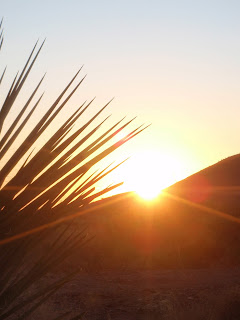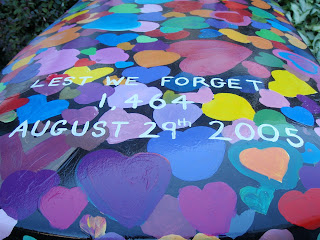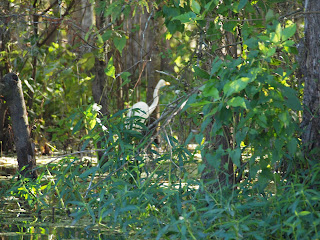 Many times during our conversations about our proposed travel route across the southern States people would mention the drive across Texas. They said things like, “started before sunrise, and now the sun has set, but we haven’t left Texas yet” and “it’s a good two day drive in a fast car” and “you should pace yourself, it’s a long way across Texas.” So with this advice we approached the drive out of New Orleans with some very positive thoughts and plans. We would enjoy the drive, taking in all the new sights and make it fun.
Many times during our conversations about our proposed travel route across the southern States people would mention the drive across Texas. They said things like, “started before sunrise, and now the sun has set, but we haven’t left Texas yet” and “it’s a good two day drive in a fast car” and “you should pace yourself, it’s a long way across Texas.” So with this advice we approached the drive out of New Orleans with some very positive thoughts and plans. We would enjoy the drive, taking in all the new sights and make it fun.We travelled across more of the concrete above-swamp highways and finally left the bayous of Louisiana behind and crossed the border into Texas. Of course, there was a HUGE sign with a HUGE star on it, telling us we were now in TEXAS. Stopping at the Visitor Welcome Centre we gathered some information about State Parks and chatted with a couple and their little boy who were travelling from East Louisiana.
They were keen to get to Houston to visit a doctor there and check out the hospitals. Their son has autism and as they want only the best for him are considering a move to Texas to get better medical help. The medical system is so very different to what we have back home.
In the United States the medicare system provides health insurance coverage for those who are above 65 years of age. Medicare is a social insurance program that operates in a similar way to Medicare in Australia, except that in the US it is restricted to those above 65, plus some other groups of people such as the disabled. That means that you have to work til you are 65 or have private health insurance, which is very, very expensive. People we have spoken with live in fear of losing their job, getting sick or injured and needing medical help. They work in jobs that they really don’t like but stay for the ‘benefits’, which means they get health cover as part of their salary. Another reason we love living in Australia.
Anyway, back to Texas. Our first night we stayed at Village Creek State Park where I saw many little cottontails but wasn’t quick enough to get photos; also enjoyed a long chat with a young Christian couple from New Orleans, and then it was back on the road.
 Our plans included a stopover in Houston but the closer we got to the city the more traffic surrounded us and the GPS was a little erratic. Johno did a fine job of manipulating the RV along the 7 lane (in our direction) freeway (speed limited at 75mphr) with semi-trailers, buses and trucks moving on and off continuously. When it all got too much he said, “we’re going through, I’m not stopping here” so we kept on going.
Our plans included a stopover in Houston but the closer we got to the city the more traffic surrounded us and the GPS was a little erratic. Johno did a fine job of manipulating the RV along the 7 lane (in our direction) freeway (speed limited at 75mphr) with semi-trailers, buses and trucks moving on and off continuously. When it all got too much he said, “we’re going through, I’m not stopping here” so we kept on going. We needed a ration run to top up the pantry so finally stopped at San Antonio to pick up supplies. We enjoyed dinner at an “all you can eat buffet” - $9.99 per person – where they cooked our steaks and seafood while we waited – very tasty.
Then, we made friends with the security officer at the Walmart carpark who assured us we could park Freddie and sleep there undisturbed, so we did! And our new friend kept tabs on us all night long – driving by and checking our vehicle – not bad for a boondock.
 Early the next day we headed back onto the road through Texas. It normally rains about 60 inches in the summer but this year they only had 30 inches so we had been warned about the hot dry plains. One old fellow told us, “It ain’t pretty out there, you know” and he was right – dry, dusty, flat, brown, barren land.
Early the next day we headed back onto the road through Texas. It normally rains about 60 inches in the summer but this year they only had 30 inches so we had been warned about the hot dry plains. One old fellow told us, “It ain’t pretty out there, you know” and he was right – dry, dusty, flat, brown, barren land.Nine hours driving and we were ready to stop. I found a State Park that looked interesting. It promised us a swim so we stopped and after inspecting it, decided to stay two nights.
Balmorhea (another unfortunate name - rhymes with diarrhea) State Park is a desert park but has a huge artesian spring pool that is open daily and fed by San Solomon Springs. It is one and three quarter acres in size, is 25 feet deep and a constant temperature of 72 – 76 degrees. We spent a lot of time in the water, as it was about 102 degrees on the days we were there. We got lots of great photos there in the morning before we left.
We met a bloke at Balmorhea who owned a bar in New Mexico. He had come over to Texas to do some diving in the pool. He advised us to avoid stopping anywhere close to the Mexican border. There has been a lot of trouble (drug cartels) lately and innocent people being shot.
Johno was keen to stop in El Paso to buy some boots so our plan was to stop, shop and scoot, and that’s what we did. Although we were tempted to make a detour and visit the town Truth or Consequences – yes – it really is a town in New Mexico, I kid you not. It is about 120 miles north of El Paso and has a population around 8,000.
SO! Johno got his boots and we drove right through New Mexico, only stopping for the Border Patrols who pulled us over about four times to check our passports and check the vehicle for ‘illegal passengers’.
 The vista didn’t change at all, dry desert conditions all along the way. I kept thinking of desert songs like Hotel California, Horse With No Name, and Peaceful Easy Feeling. Our radio isn’t very good so I just sang songs in my head to pass the time.
The vista didn’t change at all, dry desert conditions all along the way. I kept thinking of desert songs like Hotel California, Horse With No Name, and Peaceful Easy Feeling. Our radio isn’t very good so I just sang songs in my head to pass the time.Our next stop was in Arizona at a little town called Wilcox – nothing much of interest there but our ever-so-friendly host said we shouldn’t drive further without going to visit Tombstone. “It’s only an hour south of here,” he said. “It’s worth a visit – not everyone can say they’ve been to Tombstone.”
 Well that sealed the deal for us – of course we would go to Tombstone, famous for gold and silver mines, Apache Indians, the Earp brothers, Doc Holliday, the OK Corral, gunfights, bordellos, saloons, gambling halls, Boot Hill Graveyard, the Crystal Palace Saloon, the Birdcage, and more.
Well that sealed the deal for us – of course we would go to Tombstone, famous for gold and silver mines, Apache Indians, the Earp brothers, Doc Holliday, the OK Corral, gunfights, bordellos, saloons, gambling halls, Boot Hill Graveyard, the Crystal Palace Saloon, the Birdcage, and more.
 Well that sealed the deal for us – of course we would go to Tombstone, famous for gold and silver mines, Apache Indians, the Earp brothers, Doc Holliday, the OK Corral, gunfights, bordellos, saloons, gambling halls, Boot Hill Graveyard, the Crystal Palace Saloon, the Birdcage, and more.
Well that sealed the deal for us – of course we would go to Tombstone, famous for gold and silver mines, Apache Indians, the Earp brothers, Doc Holliday, the OK Corral, gunfights, bordellos, saloons, gambling halls, Boot Hill Graveyard, the Crystal Palace Saloon, the Birdcage, and more. We drove in on Sunday Morning, just in time for the gunfight re-enactment. The streets were closed off for two blocks, and the only traffic was horse & wagon, many local folk outfitted in old cowboy gear walk the streets. It really felt like we were in another world.
We drove in on Sunday Morning, just in time for the gunfight re-enactment. The streets were closed off for two blocks, and the only traffic was horse & wagon, many local folk outfitted in old cowboy gear walk the streets. It really felt like we were in another world. The original buildings still exist with bullet holes visible, the boardwalks are old and splintered, the shop fronts are authentic, their stores full of Western clothing and Tombstone souvenirs, and shopkeepers all dressed in period costume. It was fun to see what it would have been like in its hey day! The Tombstone legend remains - a town that is too tough to die!
The original buildings still exist with bullet holes visible, the boardwalks are old and splintered, the shop fronts are authentic, their stores full of Western clothing and Tombstone souvenirs, and shopkeepers all dressed in period costume. It was fun to see what it would have been like in its hey day! The Tombstone legend remains - a town that is too tough to die!Back on the I10 highway - heading west, the desert remained constant although the type of vegetation changed with different types of cactus edging the roadside.


 The Saguaro’s are astounding, they grow so tall and their branches (arms) extend upwards making them look more human that I could have imagined.
The Saguaro’s are astounding, they grow so tall and their branches (arms) extend upwards making them look more human that I could have imagined. Camped at Pichacho Peak in Arizona, the most prominent feature in the landscape for miles and miles, we saw huge tracts of saguaro and I tried to do them justice in my photos. I even got up early to get pictures with the light on their prickles.
It’s hard to find the words to describe camping out in that desert. It is sparse, dry, brown, sandy, hot, and barren. You could say it’s ugly but there is such beauty in the ugliness of it all. The colours in the sky at sunset and sunrise, the spooky howling of the coyotes in the dark night, cactus flowers and formations, the crackle of the soil under your feet early in the morning, and the little kangaroo rats that scurry around foraging for any crumb dropped by a human – all this and more make the desert a beautiful place to be. Whilst I couldn’t live with the brown-ness of it, I can now understand why people choose live in such places.
Still travelling west, we camped on the Colorado River at Yuma, AZ for two nights. Yuma is an unusual town in that its population swells by about 100,000 people during the winter when retirees from all over the USA and Canada move south to avoid the harsh winter conditions. There are RV resorts and golf clubs everywhere and the RV repair, sales and service industries have guaranteed customers. Again we made a friend of our neighbor who came to visit. When we asked what we should see in the area, she suggested Anza Borrego – “take route 78, that will get you there” she said, so we did!
Driving towards the park we came across an amazing site – there were all these huge iron sculptures sitting out in the grasslands – horses, elephants, eagles…. It is called Galleta Meadows and is a privately owned exhibit just outside Borrego Springs. The following info is from their website.
www.galletameadows.com/ History is unfolding in a town already filled with its own unique historical milestones, Borrego Springs with the first placement of the Gomphotherium free standing art structures.
Dennis Avery, land owner of Galleta Meadows Estates in Borrego Springs envisioned the idea of adding 'free standing art' to his property with original steel welded sculptures created by 'Perris Jurassic Park' owner/artist/welder Ricardo Breceda based in Perris, California.
We stopped to take some photos before heading into Anza-Borrego Desert State Park, which is the largest state park in California. Again, we were in awe as we took in the rugged mountain ranges, the barren landscape, the scrappy grasslands, and the heat was nearly unbearable. Then sunset came and we ate outside watching the full moon rise in a clear black sky – just takes your breath away. I was also amused to watch a little kangaroo rat with the longest tail ever scurrying around looking for food yet trying to dodge the light from the campsites.
The next morning we were up early, breakfasted and off to hike into the Borrego Palm Canyon, the third-largest palm oasis in California. It was about 95 degrees that day and although it’s only a 3-mile hike, it sure felt a lot longer. The route led us over round riverbed stones, past huge rocks, through the desert landscape, across creeks and up mountain ledges…and our reward was a beautiful, well-watered oasis, tucked away in a rocky V-shaped gorge with a palm grove and a waterfall. A cool resting place - just right for a snack and water, then we headed back so we could get back on the road.








































